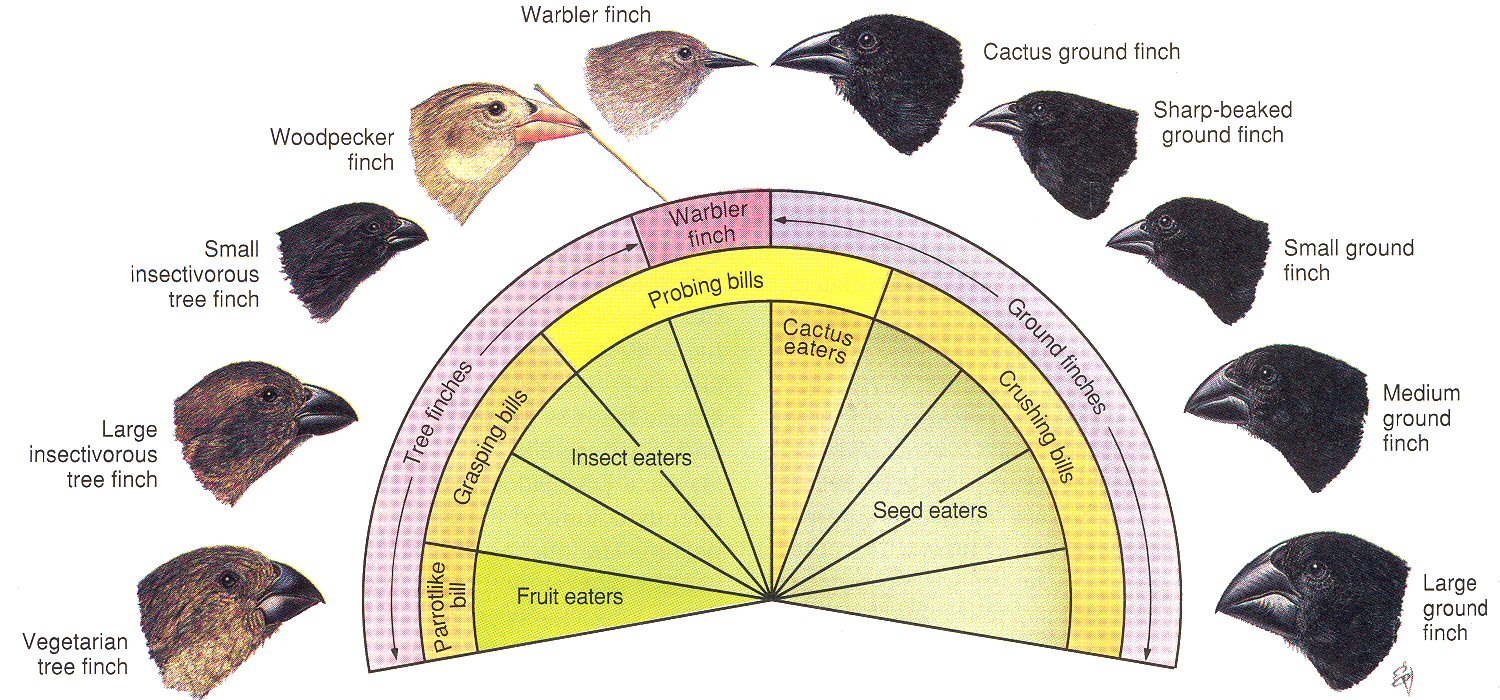Charles Darwin Summary Questions
- Due Apr 20, 2020 at 11:59pm
- Points 8
- Questions 4
- Time Limit None
- Allowed Attempts 3
Instructions
Be able to answer the following questions.
- What scientist studied natural selection?
- How did Darwin travel around the world to collect his data? What was the name of his book he wrote about his travels?
- What islands did Darwin do much of his research and why are these islands famous?
- What animals did Darwin study on the Galapagos?
NATURAL SELECTION
In the 19th century, an English natural scientist named Charles Darwin (on the right) was fascinated by the diversity of living things on earth.


He set out to answer the following questions:
- Why are organisms different?
- Why are organisms similar?
- Why are there so many different types of organisms?
While searching to answer his questions, he discovered the principles of natural selection.
- This principle is one of the most important ideas in life science.
- In everyday English, natural selection means "survival of the fittest".
- Simply stated, an individual in a species that has traits (genes) that are best suited to survive changes in the environment are the ones that live and reproduce.
- This increases the presence of those traits (genes) in the species until it eventually becomes a characteristic of that species.
Imagine a terrible drought that lasts for years.
- Many animals and plants would die from a lack of water.
- Some would live and pass on their genetics to future generations.
- New individuals that acquired these genes would be more resistant to drought.
Voyage of the HMS Beagle
In 1859, Charles Darwin published his book, On the Origin of Species by Means of Natural Selection.
- His book describes the observations and evidence that he collected over 20 years of research, beginning with a five-year voyage around the world on a British research ship, the HMS Beagle.

Charles Darwin’s famous five year voyage was aboard the HMS Beagle from 1831-1836. Darwin made observations about plants and animals around the world.
HOW DO TRAITS INFLUENCE SURVIVAL?
The Galápagos Islands
The Galápagos are a group of 16 volcanic islands near the equator, about 600 miles from the west coast of South America.
- The islands are famous for their many species found nowhere else.

Darwin spent months on foot exploring the islands.
- The specimens he collected from the Galápagos greatly influenced his ideas of how a species can change over time.
Watch this video:
https://www.youtube.com/watch?v=Gb_IO-SzLgk&t=16s
On the Galapagos, Darwin observed that the same kind of animal differed from one island to another.
- For example, the iguanas (large lizards) differed between islands.
- The members of one iguana species spent most of their time in the ocean, swimming and diving underwater for seaweed, while those of another iguana species lived on land and ate cactus.
- Darwin wondered why there were two species of iguana on the same set of islands that were so different from one another.
- What do you think?

Giant Tortoises
Charles Darwin observed giant tortoises on the Galápagos Islands.
- These tortoises were so large that two people could ride on them.
- Darwin noticed that different tortoise species lived on islands with different environments.
- He realized that the tortoises had traits that allowed them to live in their particular environments.
- For example, tortoises that ate plants near the ground had rounded shells and shorter necks.
- Tortoises on islands with tall shrubs had longer necks and shells that bent upwards, allowing them to stretch their necks.
- Darwin began to hypothesize that the traits of an organism helped it to survive in different environments.

The name “Galápagos” means “giant tortoise.”
- When Darwin arrived on the Galápagos Islands, he was amazed by the size and variety of shapes of these animals.
- The giant tortoise is a unique animal found only in the Galápagos Islands.
- There are only about 200 tortoises remaining on these islands.
Darwin's Finches
The most studied animals on the Galápagos are finches, a type of bird.
- When Darwin first observed finches on the islands, he did not even realize they were all finches.
- But when he studied them further, he realized they were related to each other.
- Each island had its own distinct species of finch.
- The birds on different islands had many similarities, but their beaks differed in size and shape.


The birds came from the same finch ancestor.
- They evolved as they adapted to different food resources on different islands.
- The first bird uses its large beak to crack open and eat large seeds.
- Bird #3 is able to pull small seeds out of small spaces.
In his diary, Darwin pointed out how each animal is well-suited for its particular environment.
- The shapes of the finch beaks on each island were well-matched with the seeds available on that island, but not the seeds on other islands.
- For example, a larger and stronger beak was needed to break open large seeds on one island and a small beak was needed to eat the small seeds on a different island.